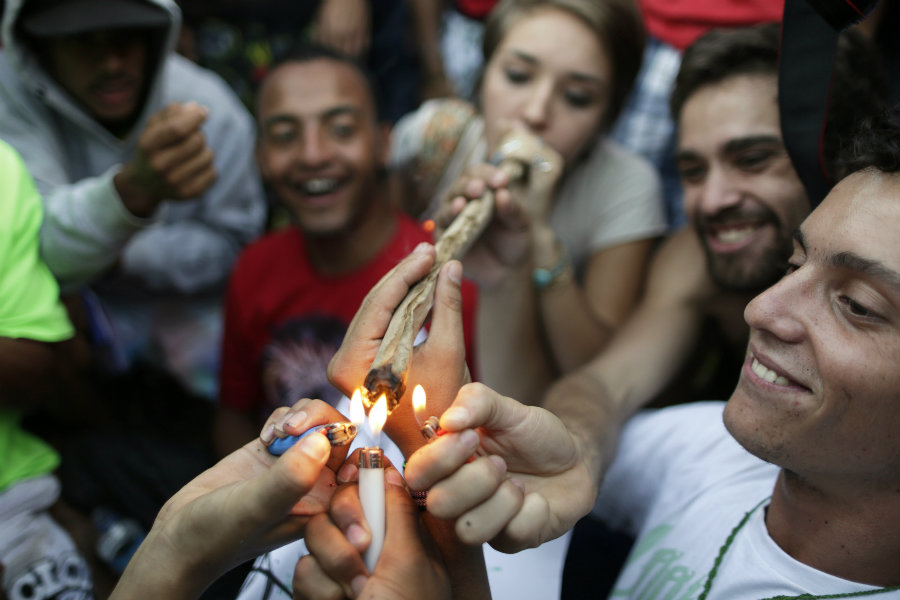A new study from the American Academy of Pediatricians is highlighting the risks of marijuana use in teenagers, as it can cause long-term side effects on the user’s way of life, especially on brain development.
Pediatricians are now advising parents to talk to their children about marijuana use, seeing that it has gained fame as a benign drug. Furthermore, children are more than ever at an increased risk of suffering an overdose due to the availability of both commercial and homemade marijuana edibles, which could be easily mistaken by regular snacks.

The report lists several facts regarding the use of marijuana by teens, joined by guidelines to identify potential problems and helping problematic users.
There are also ten specific points for pediatricians to take into account when addressing marijuana to patients, including the potential of marijuana addiction and the dangers of performing dangerous tasks under its influence.
Marijuana use is not good for teens
According to the report, rates of use have remained “static” for teens aged 12 to 17, regardless of whether the state has passed legislation concerning marijuana use, but there is an exception with 12th- graders, where a third of them reported having used marijuana in the previous year. This goes against the national consumption rates of tobacco and alcohol, which has declined in the past few years.
The new laws have created a new environment in which marijuana is seen acceptable. Some states even abide the use of marijuana by teens if their parents permit so. Other states have also partially decriminalized the substance, reducing penalties from felonies down to misdemeanors or infractions.
Even if cannabinoids have been proven to be of use for adults to address disease symptoms such as increasing appetite for chemotherapy patients and helping those with chronic neuropathic pain, cannabis can also cause dysphoria and dizziness. Besides, the only studies published on the efficacy of marijuana use in young people have to do with treating seizures.

Smoking marijuana can still cause adverse effects on lung function, and marijuana use is linked to an increase in rates of mental health disorders such as psychosis and depression, which prompts the question about more severe and long term side effects concerning mental health.
Concerning brain development, marijuana use affects the prefrontal cortex, which includes the areas where judgment and decision-making take place. These areas are not fully developed until the early 20s. Studies concerning brain function of young marijuana users revealed that they were prone to suffer from abnormalities in the hippocampus and the prefrontal cortex, affecting memory and executive functioning and planning respectively.
Pediatricians are the pivotal point of marijuana use in teens
The report suggests that upon entering consultation with a pediatrician, teens should be screened for drug use. If marijuana use is confirmed, the pediatrician should ask them if they use it alone or with others, while also questioning the patient about the circumstances and motivations that lead to the drug’s consumption. Even if teens may use marijuana to enjoy the euphoric effects, they may also incur its use for treating their depression, stress, or anger with the drug. These teens are more likely to meet criteria for a persistent mental health disorder, making them eligible for treatment, including counseling and guidance from a psychiatrist.
Regarding marijuana as a gateway drug, studies show that the younger the teen starts using drugs, including marijuana, the more likely it is that they will develop an addiction in adulthood.
“Evidence clearly shows that marijuana is an addictive substance; overall, 9% of those experimenting with marijuana will become addicted; this percentage increases to 17% among those who initiate marijuana use in adolescence and to a range of between 25% and 50% among teenagers who smoke marijuana daily,” reads the study.
A suggestion for pediatricians is to “challenge” the patient to see if they can quit using the drug for a brief period. This is to see the restrictions that the patient imposes upon itself. If they can stop using the drug completely, they should be questioned whether they feel better, worse or the same. During the test period, a discussion of pros and cons should take place. If the teen is unable to stop, high-risk situations should be assessed to treat the problem in the long term.
The report calls for pediatricians to assume the role of advocates for how teenage marijuana use is perceived. Researchers propose taking advantage of the “office setting” to educate and guide both parents and children about the use of marijuana, seeing that parents who use marijuana may mistakenly encourage their kids on using it since it has become increasingly available.
According to the American Academy of Pediatrics (AAP), parents may choose to administer marijuana to their kids if they suffer from severe chronic conditions in case standard therapies prove to be uneventful. Because of this, they may feel inclined to ask their pediatrician for counsel, but because a pediatrician recommending marijuana use is a federal offense, it is important for the health practitioner to be fully aware of current state laws and the protections they may enjoy during such an event.
Source: AAP

Kids can handle the truth – provided you tell/teach the truth. Driving a car, drinking alcohol, gambling, smoking pot and unbridled sex are all adult behaviors. As kids grow, they deserve to hear the truth about them instead of blind abstinence and religious drama.